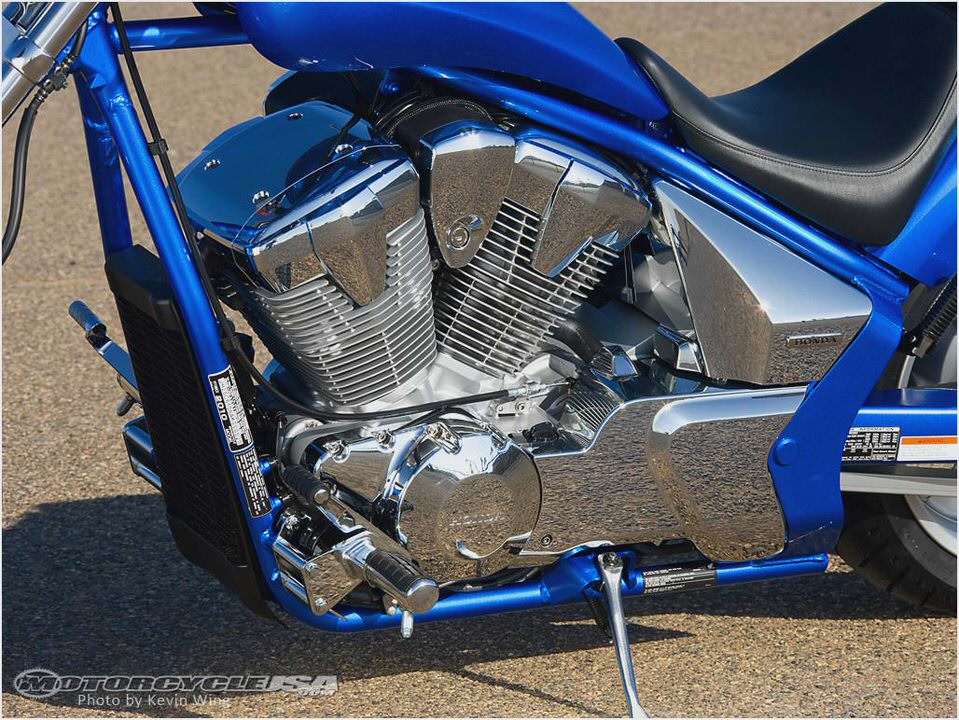
V-Twin Cruiser – V-Twin Tech Tonics
Thumb the button and the starter engages with a clank and labors to put a few rpm into your cruiser’s gleaming V-twin motor. Whirr, whirr. cough. thump, thump, thump. It’s alive.
You’re the prototypical enthusiast, the kind of motorcyclist who contemplates a fabulous vista thinking, That’d make for a good ride. So the sound of this big-inch cruiser’s engine coming up to temperature in your driveway is truly music to the ears. Yet it’s not just the distinctive rumpa of the exhaust or the shimmering whiz of the primary gear-your ardor rises from an appreciation of the whole aesthetic.
Today’s best cruisers are powerful and reliable, yet also soulful in ways that high-strung, racing-oriented bikes could never be. Seeing that large V-twin quavering in the frame reminds you every mile of why you bought this bike: attitude. Laid-back, but ready to go when you are.
Cruisers, perhaps more than any other subsegment, live or die on the emotional strength of their engines. (And by this we are not describing the fortitude needed to take on Dr. Phil.) Again, this is not a numbers game; pure horsepower, even a tasty power-to-weight ratio, means a lot less here than personality, soul and charisma.
And yet your infatuation with the modern V-twin engine is not without technical merit-regardless of what the green-leather boys have to say-because today’s tailor-made V-twin cruiser engines are extraordinarily good at what they’re intended to do. And that’s no mean feat.
Indian built the first V-twin in 1903, the same year as the first Harley-Davidson (a single), but the layout appeared to have so many intrinsic benefits that it quickly spread. Harley’s first V-twin, which debuted in ’09, was not a success-providing a fantastic engineering lesson that simply doubling the cylinders was not enough. Harley didn’t offer the V-twin in ’10, but rebounded with the Model 7D in ’11 that clearly formed the nucleus of what Harley was to become.
Say what you want about Harley-Davidson, but the lads learned from their mistakes in the early days.
From these humble beginnings-really just an engineering expedient to getting more power by using two cylinders on a common crankcase-the V-twin engine propelled Harley-Davidson and Indian into a prominence bowed but unbroken by the Great Depression. That Harley survives today has to do with luck and business acumen as much as engineering talent-many would argue that Indian was technologically more advanced, and that motorcycles from all parts of the globe could do anything a Harley could do, only better and for less cash.
Harley’s fortunes ebbed and flowed throughout the 20th century, and we rejoin the plot as Japanese manufacturers, circa the late ’70s, notice that the classic Harley-Davidson-basically a touring bike still powered by what at the time was a terribly outdated and woefully unreliable air-cooled V-twin engine-was moving well enough from showrooms to warrant a closer look. (More than that, Harley had survived the bad boy image of the ’60s and, as a manufacturer somewhat less than a cultural icon, was on the verge of cashing in on the outlaw profile.)
Fresh Wind From The East
- Honda shows off Dakar history with exhibition of Dakar road and race bikes…
- 2014 Honda FourTrax Foreman 4×4 ATV Review RideApart
- How to Take Apart the Carburetor on a Honda CRF 100 eHow
- Honda Rebel 250 Review
- Honda unleashes Japan-only 2013 VTR250 and VTR250F V-Twin sportsbikes…

